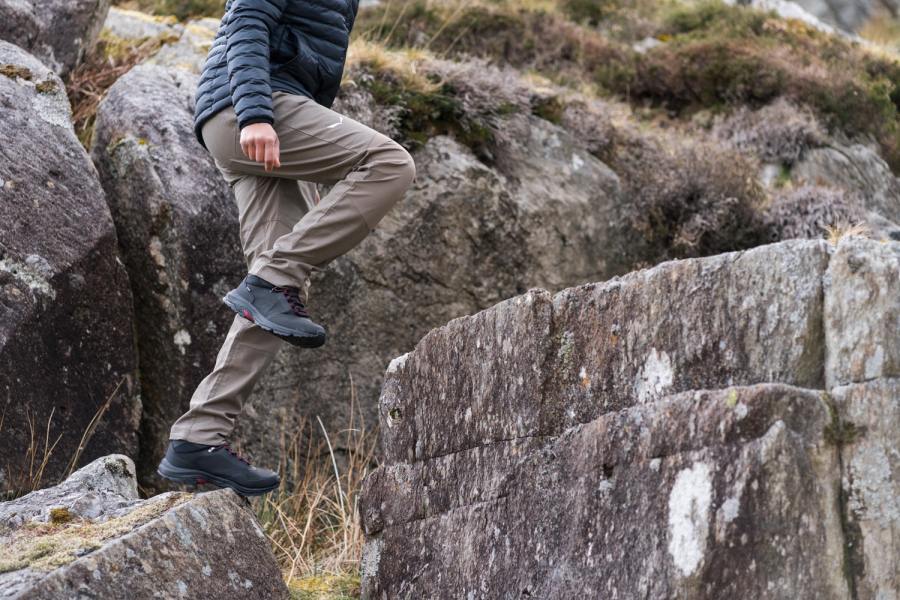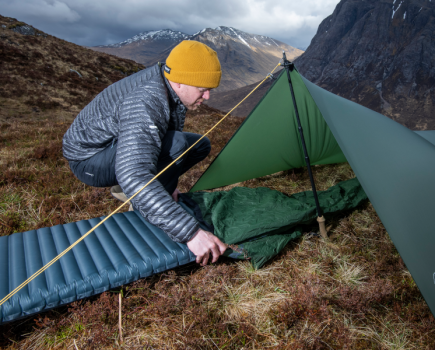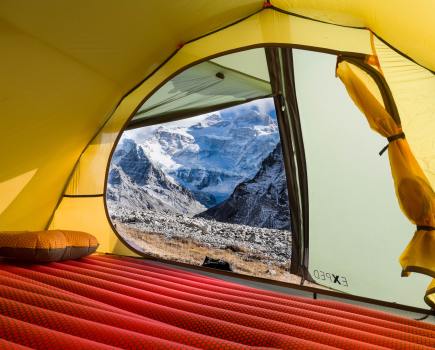Will Renwick, content editor at The Great Outdoors, gives his advice for choosing the right kind of hiking pants for your outdoor adventures
When it comes to hiking, having the right gear is crucial for a comfortable and enjoyable experience, particularly when it comes to your choice of legwear. Choose the right pair of hiking pants and you should be able to enjoy your trip, feeling comfortable and protected. Choose the wrong pair and you’re potentially going to feel uncomfortable, irritated and you might even be jeopardising the success of the whole day. I’ve made the mistake of hiking in pants that weren’t quite right for my trip before, so I’m here to prevent you from doing the same yourself!
Fit: should hiking pants be baggy or trim?
Just like with a waterproof jacket or a pair of hiking socks, the ideal fit for hiking pants should strike the right balance between functionality and comfort. Pants that are too tight are going to potentially restrict your movement on a hike – particularly when it comes to scrambling – while excessively baggy pants can be heavy, flappy in the wind and can feel less nimble.
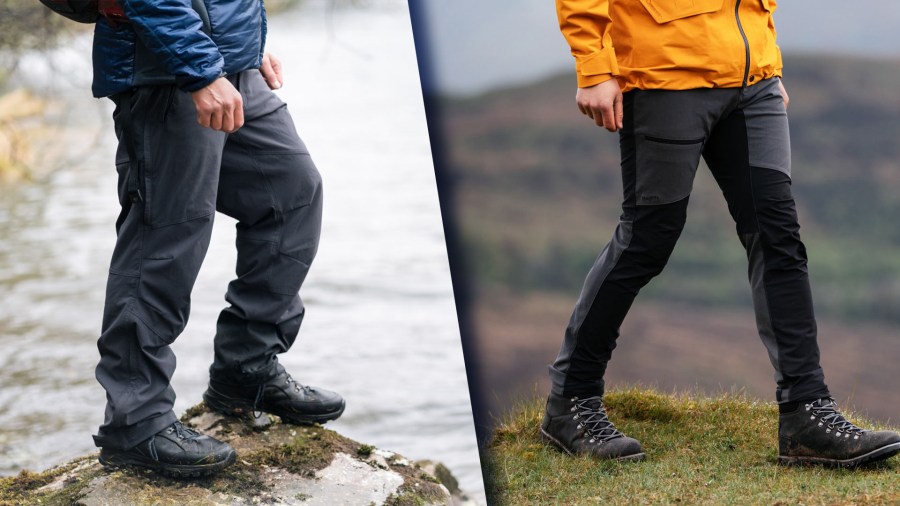
Baggy versus close-fitting. They each have their trade-offs.
Look for pants specifically designed for outdoor activities, such as hiking or trekking. These pants typically feature reinforced knees, articulated knees, and gusseted crotches, which offer improved mobility and durability. Many hiking pants will come with adjustable waistbands or integrated belts, allowing you to customize the fit according to your preferences.
Materials
The choice of material for hiking pants is crucial as it affects comfort, breathability and durability. Synthetic fabrics such as nylon and polyester are popular choices due to their moisture-wicking properties, quick-drying capabilities, and resistance to abrasion. These materials also offer good breathability, keeping you cool during strenuous hikes. Sometimes polyester and nylon will be blended together, along with elastane, to create a stretchy but protective softshell fabric. They can often also come with a durable water repellent (DWR) treatment – similar to the kind used on many backpacking tents – which will mean that the fabric will be able to shed light rain and snow.
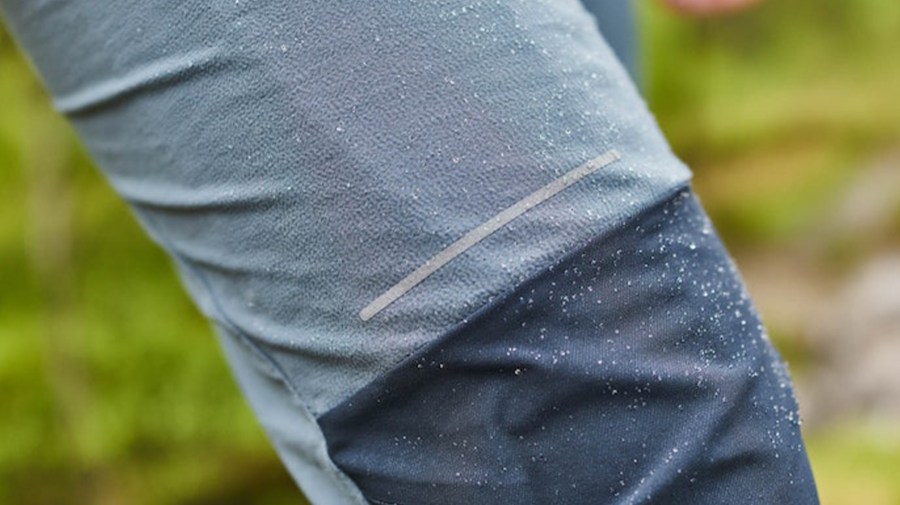
An example of a pair of trousers with a DWR treatment. Photo: Michael Drummond
Polycotton, a blend of cotton and polyester is another popular material that’s used for walking trousers. This is durable, breathable and it can range in thickness. Many brands will treat their polycotton to make it water resistant. In the case of Fjällraven, one of the most notable brands to use polycotton for their trousers, their Greenland Wax can be applied to add resistance to wind and rain.
Pants with a high cotton content should be avoided as they tend to retain moisture and can leave you feeling uncomfortable and cold.
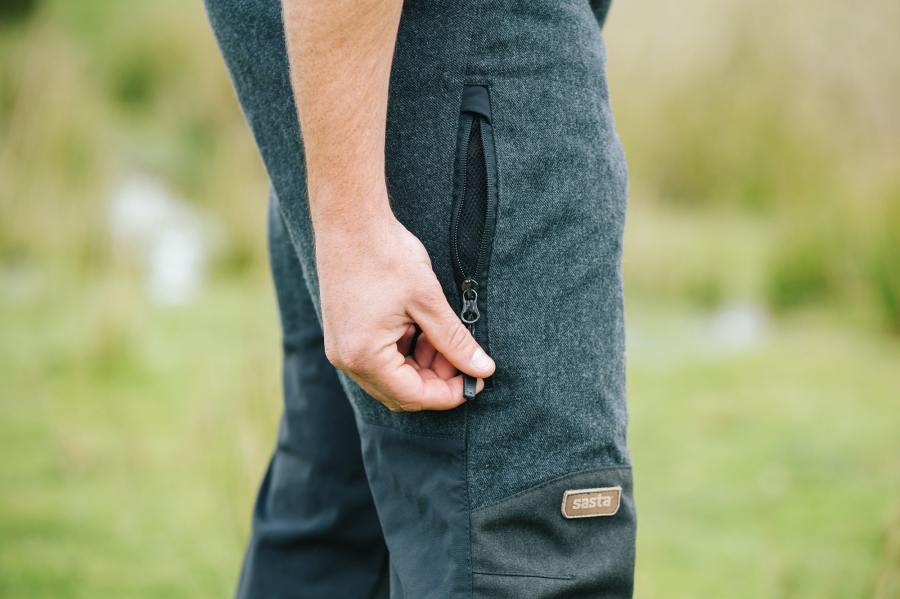
Sasta’s Antons, an example of walking trousers made from wool. Photo: Chris Johnson
For colder climates, consider walking trousers with additional insulation or layering options. Some brands also manufacture traditional style trousers that are made using wool content. These types of trousers are often warm, durable and naturally water, flame and odour resistant. The downside is that they can be quite heavy and also in some cases – but not all – a little itchy!
Pockets
Multiple pockets with secure closures provide convenient storage for small essentials such as maps, compasses, or snacks. It’s always handy to have at least one pocket that’s big enough to fit a map and one zipped pocket that can keep small valuables safe.
Ventilation
If you’re after pants to wear in warm conditions then look for pants with zippered vents or mesh panels in strategic areas such as the thighs or shins to improve airflow and regulate body temperature during strenuous hikes.
You can also find trousers that can be converted into shorts. These can be useful, however, the downside is that the zips can often be flimsy, easy to break and difficult to fix.
Sun Protection
Pants with built-in UPF (Ultraviolet Protection Factor) offer added defense against harmful sun rays, especially for hikes in sunny or high-altitude environments.
How to choose hiking pants: conclusion
The top line is that you should always consider the season or seasons that you’ll be wearing the trousers in and the type of activities you’ll be undertaking in them too. From there, work out what kind of balance you want between durability, insulation, breathability, weight and wet weather protection and bear in mind all the factors we’ve mentioned in this article – and with that you can’t go wrong when choosing a pair of trousers for hiking.
You may also like:
How to choose a pair of hiking boots

